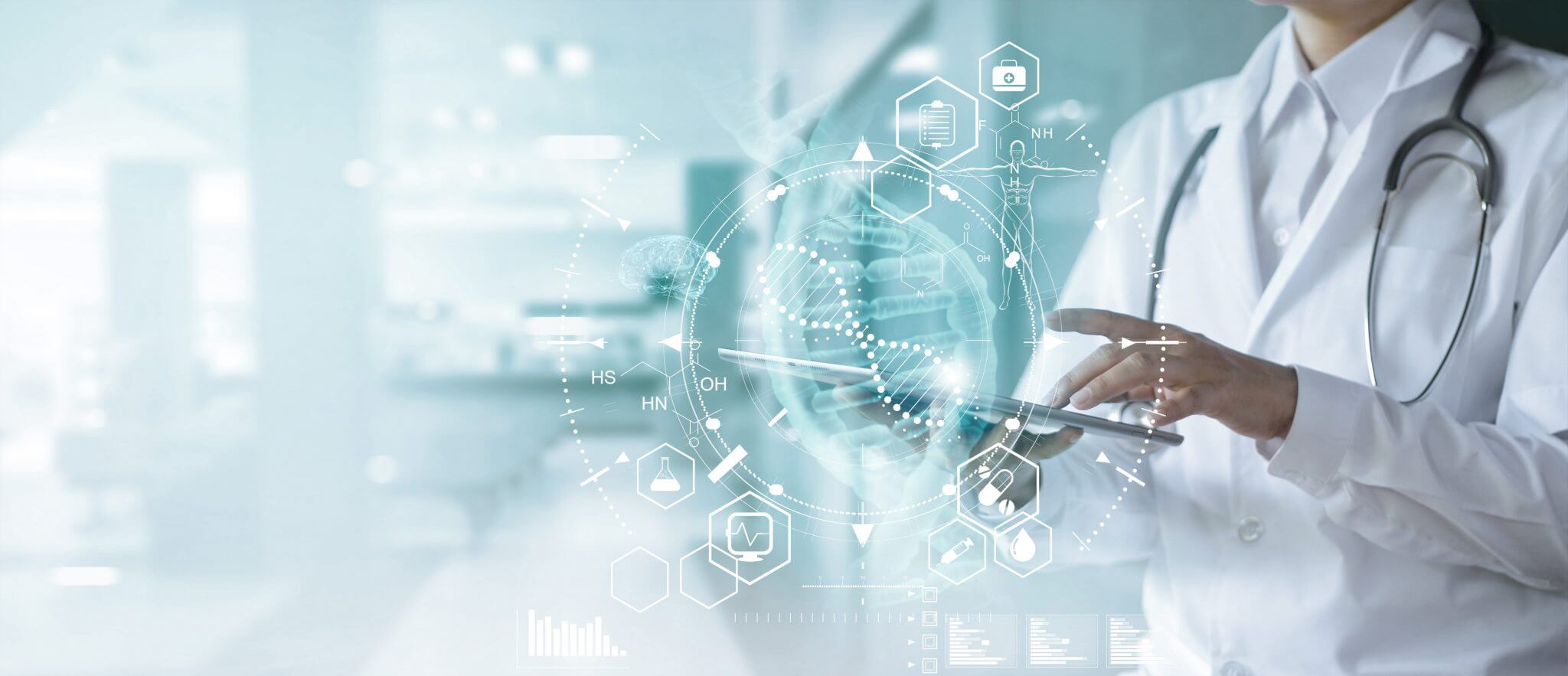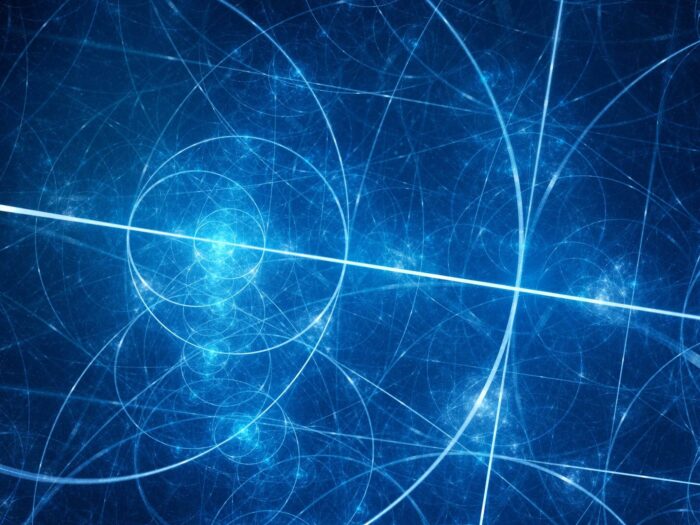
Covid vs AI
What is this blog post about?
We all know what Covid-19 is and how it impacts our lives around the globe. This article won’t be about all that. Instead, we will have a look at one aspect of what we do to fight its global consequences. Now that we all realize how big this threat is , we need to deploy the most powerful weapon the scientists have today: the AI.
What is machine learning how does it work?
Let’s imagine that we have a large group of people and we are given the task to find out why half of them are happy and the other half are not.
In essence, we should find out what these two groups have in common. Every person will have a large scale of characteristics, such as blood pressure, blood sugar level, social status, books read and many, many more. Let’s assume we have thousands of characteristics for every person.
Now let’s imagine we have a device where we can import this data transformed in numbers and we expect the device to tell us based on these numbers if the person is happy or not.
What is this device and how does it work?
It is a neural network, and this idea is borrowed from the human brain. The neurons are connected to each other and as the information goes through them, each neuron modifies it – like a gate. Every neuron has a digit value, randomly assigned to it in the beginning. In the first, entry layer, we have as many neurons as there are columns of data: in our case – person characteristics. So, we have thousands of neurons in our first layer, one per each of these characteristics. The neuron multiplies its own value to the value that goes through it, then modifies the result and passes it through to the neuron from the next layer. In the next layer, every neuron receives data from many other neurons from the previous layer (in the simplest case from all of them), then sums this data, multiplies it to its own value, modifies it and passes it through.
All this is a big mathematical operation based on multiplying and summing matrix of numbers.
In our example, when we get to the last layer, we will have only one neuron, because we need a simple statement in the end: happy or not. If we had more exits, we would need one neuron per each in this last layer.
Let’s say that happy should be represented with the number 1 and unhappy – with the number 2.
And let’s say we pass our first person who is happy and on the last neuron we receive result 15. We expect 1 as result. So, we return an error signal to our neuron network that the result is wrong and based on gradient (calculus) we calculated in which direction every neuron in our network should correct its value. Correction is done with a very small number called “learning rate”.
When we pass large amount of data through our network, millions of people, every time, every single set of their characteristics will make small corrections to the neurons. Thus, we teach the artificial intelligence.
The process is called “training” and it is repeated millions of times until we receive results with the desired accuracy.
And this simple neuron network is called “classifier”. They are many other types of neural networks, some of which are very complex, but they all follow the same principle:
Data->neuron network (set of connected neuron layers)->expected result->error->correcting neuron values based on the error->Data …
Inside this straightforward process are neurons that would have values that after the training will satisfy every one of all the millions of sets of characteristics.
Usually the necessary accuracy of training data should exceed 99%. This means that for every set from our data, after the training is complete, the network should provide output (with 99% accuracy) = 2 (unhappy) when the input is ”unhappy” person. Similarly, the network should print the output of 1 when we insert a “happy” person as input.
The example above is no longer considered training, this is how we test the already trained network instead.
The human brain has neuron networks with billions of neurons and the training never ends.The training data comes from our senses and thoughts and this is how we build knowledge.
What are the vaccines and how do they work?
How does our body react when it faces a virus?
To put it simple, the “weapons” of our immune system are the B and the T/NK cells.
The purpose of the B cells is to find and isolate the virus through synthesis of antibodies which connect to specific parts of the virus in order to neutralize it.
The purpose of the T/NK cells is to find the infected cells and isolate them from the healthy ones and also to regulate the work of the B cells. This is how our immunity works.
They work together in a perfect team which save us the entire time from all microorganisms which attacks us day and night.
The problem is that when the B and the T cells do not have data for a virus, they need more time to find a solution. If they had the data, like they do for hundreds of viruses, they could apply the proper solution right away.
The thing with covid is that not only is it unknown and mutates quickly, but it is also very aggressive and the B and the T sometimes could not make it on time.
What complicates it even more is the “storm” reaction of our immune system causing the “heavy” cases because our cells fold between the crossfire of our desperate immune system
In other words, even when our immune system is strong, this doesn’t mean that it is smart enough to beat the virus, it only means that the immune reaction will be strong. This reaction, however, could be in the wrong direction and could make the situation even worse.
What does “wrong direction” mean? It means that while our immune system is trying to kill the infected cells, meanwhile it also kills healthy cells in order to limit the virus spread. You can imagine the consequences when it overreacts …
How do vaccines work?
Simply said, they are made of some parts of the virus, the same parts that our immune system needs to fight. These parts can trigger the immune reaction but cannot make you sick. This way, through the vaccines we can “teach” our B and T cells how to recognize more quickly and effectively the virus and isolate it before it grows and makes its damage and guaranteed they prevent us from the “heavy” consequences of the virus. That’s why vaccines saved millions of lives and will save more in future.
My purpose is not to preach “against vaccine activists” by saying how important the vaccines are. To be part of the evolution or not is a personal choice.
Let’s bring all together
From the researches and the collected data we realized that 80% of the people win the battle with this virus without serious a fight or even are immune to it.
And now, how could we find what the common between all these people is😊 ?
There are hundreds of ML (machine learning) models which work at the moment in service of the medicine around the world.
Only a few years back, developing a vaccine against corona viruses was considered extremely hard, even impossible, because of the specifics of these viruses and all attempts in this direction were not successful.
Today, there are more than 200 very promising vaccine candidates.
Most of them are already being tested on animals.
Research by:
“BOSTON, MA, USA, October 21, 2020 /EINPresswire.com/ — Bioinformatix.io, an industry leader in applying AI and machine learning to solve biomedical and public health problems , is proud to announce the publication of co-founder and Chief Data Scientist Eric Luellen‘s newest comparative effectiveness research study in the peer-reviewed JMIRx Med special edition on COVID-19.”
“Understanding what makes [80% of infected people] immune could inform public health policies as to who needs to be protected – and why, and assist with prioritizing mass vaccinations.”
— Eric Luellen
The research finds out that for all these millions of people the key characteristics are three substances with exact values.
Analyzing the patterns (representations) that neurons are built during the training, lead us to the conclusion that these three substances affect the outcome of the neuron network the most.
• SCGF-ß (>127,637); or, • Interleukin-16 (IL-16) (>45); and, • Macrophage colony-stimulating factor (M-CSF) (>57).
For all these people whether the first substance is above the given value, or, if not, the second two substances are with the values given in brackets.
This conclusion is important because if this is true and these three substances are the key element for distinction who will beat the virus easy, then a quick test can gave the medics the precious information who will need their help right away and who is not so critical.
In the current situation, given the lack of resources, this can save lives.
The second aspect of it: This results hint about stimulating stem cells with these three mediators, and with the levels pointed in the result, which may be a cure in the future. The idea is these stem cells to be replicated in our immune systems.
“The results suggest that testing levels of these three immunological factors may be a valuable tool at the point of care for managing and preventing outbreaks. A secondary outcome suggests that stem-cell therapy with SCGF-β and M-CSF therapeutics may be a novel treatment for COVID-19.”
“I’m proud to share these initial results,” Luellen said. “They need to be replicated in a larger case-control study; however, it’s insights like these that are critical in the ongoing fight against the spread of COVID-19. Our work is just beginning.”
There are hundreds of researches based on ML nowadays in this or similar directions. For example, the task could be what the common is between people who were once sick with covid, and then got sick again a couple of months later, without having built antibodies. Why do some people get infected really easy, regardless of all precautions, and others don’t?
The directions where ML could be really helpful in the covid fight are:
- Identify who is most at risk,
- Diagnose patients,
- Develop drugs faster,
- Find existing drugs that can help,
- Predict the spread of the disease,
- Understand viruses better,
- Map where viruses come from,
- Predict the next pandemic
Conclusion
The negative impact of the pandemic on our lives is beyond dispute. Let us, however, focus for a moment on what positives the situation could provide.
People are more compassionate and willing to help than ever. This crisis reveals the best in all of us: desire and willingness to help selflessly and anonymously. Thousands of medics work 72-hour shifts and do not see their families for months. The medicine and the science are more united than ever. Big companies like Google work intensively towards developing these ML models, which may help providing the medicine with the insights it needs in this fight. Only these companies have the needed amount of data, manpower and computation power to create AI which will be “educated” as the fastest possible and will provide the necessary 99% accuracy.
This crisis leads to empathy for many people, many people realize and rediscover their real nature. At the same time technologies develop with remarkable speed because we do not have a choice. Many people think, and so do I, that when this is over, a golden age in economic, social and human perspective will come.
We should never forget one simple truth.
When you are active you face obstacles.
When obstacles face the proper attitude, they become benefits and wins.
When obstacles face bad attitude, they become issues.
If you are not active, you face no obstacles and issues, but you gain no resource to create wins and that is the biggest issue of all.
To win we should be proactive in being humans, it is that simple.
“At some point, this pandemic will be over, and our lives will get back to normal, but our families, friends, coworkers and patients will remember how we responded and treated one another. This is our time to build a legacy of empathy and grace.”
Susan Milligan


